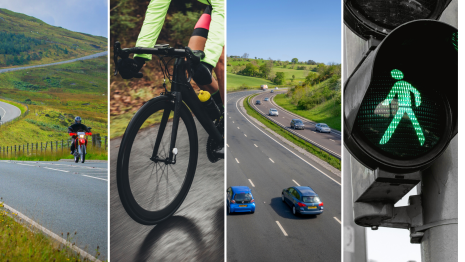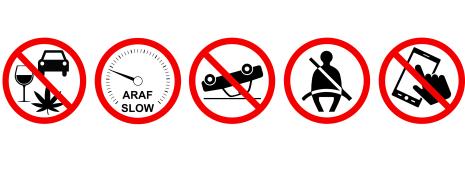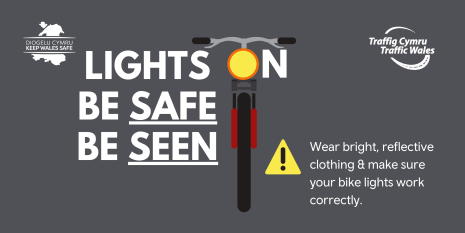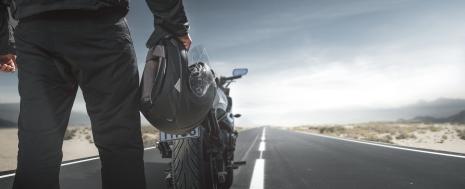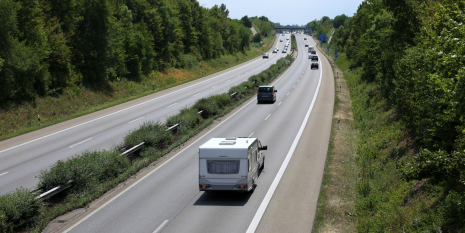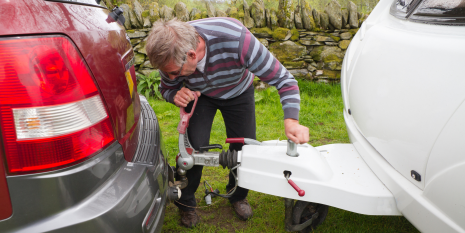We see all kinds of travellers on the strategic road network in Wales. We welcome the recent increase in active travel and will continue to make the network greener and safer for motorists, cyclists & pedestrians alike.
Here are our top tips for all road users on how to stay safe on the network.
1.Check your vehicle
It's important to look after your vehicle on a regular basis.
The majority of breakdowns across the network are avoidable provided that essential vehicle maintenance is undertaken Not sure what to check? Remember FLOWERS- fuel, lights, oil, water, electrics, rubber & self.
2. Remember the fatal 5
These are the five main causes of road traffic collisions and injuries in Wales.
- don't drink/drug drive
- kill your speed
- don't be careless
- belt up
- switch off your phone
Most people abide by the rules of the road but unfortunately, a small minority choose to put themselves, their families and innocent road users at risk
3. Plan ahead
Plan ahead so that you don’t have to fiddle with maps and GPS units to try and get to the right destination. Study the map or setup you GPS unit before you leave so that you are clear about where you’re going.
Check the latest traffic information to avoid overcrowding at busy beauty spots across the network. Please consider travelling at quieter times so that social distancing rules can be maintained at all times.
4. Keep your distance
Follow the two second rule. No one likes it when people tailgate and it’s for a good reason. Especially at speed, you need to ensure you have a safe stopping distance between yourself and the vehicle in front of you.
5. Drive to the conditions
Road speed limits are for safe driving under ideal conditions. In case of fog, rain, snow and so on you have to use common sense and make adjustments. In these situations you should reduce your speed below the speed limit and maintain longer gaps between yourself and the vehicle in front of you as the time for your vehicle to come to a stop in these conditions will increase. It’s also another reason to make sure that your vehicle is roadworthy as simple things like window wipers can be a major problem if they’re not working properly in heavy rain.
6. Be patient and courteous to other road users
When it comes to driving, over confidence can be a killer. If you’re stuck behind a slow vehicle or a cyclist it can be very frustrating, but if in doubt, don’t overtake. Wait for a safe opportunity before you pull out and when overtaking a cyclist leave at least a 1.5m space when passing.
1. Be Safe Be Seen
It’s essential that you always wear or carry something bright that will help you be seen more easily.
During the day always wear clothes with bright colours. Fluorescent material is even better as it helps you to really stand out and be seen.
Fluorescent material does not work in the dark! You need to wear something reflective so that you can be seen when car headlights are shining towards you. Even a small patch of reflective material can help drivers to see you from very far away.
2. Don’t use your phone
It’s very important that you’re not distracted whilst crossing the road. Keep your eyes on the road and ensure that traffic has come to a full stop before stopping.
3. Cross Safely
You should only cross when are where it's safe to do so. Wherever possible please use pedestrian crossings because they often offer more protection along with visibility for pedestrians and higher expectations for drivers that there a pedestrian might be present. Remember to look both ways before crossing too.
1.Be Safe Be Seen
The same rules apply as they do for pedestrians you must make yourself as visible as possible Always wear or carry something bright that will help you be seen more easily. Don’t assume that drivers have seen you and avoid other drivers’ blind spots
During the day always wear clothes with bright colours. Fluorescent material is even better as it helps you to really stand out and be seen.
Fluorescent material does not work in the dark! You need to wear something reflective so that you can be seen when car headlights are shining towards you. Even a small patch of reflective material can help drivers to see you from very far away.
2.Obey traffic rules & stick to the speed limit
This may sound simple, but it’s important to that all road users follow traffic the rules to keep themselves and others safe. There’s been an increase in excessive speeds during lockdown from both motorist and motorcyclists. Every day in the UK there are 60 serious motorcycle related road traffic accidents. 16 involve life-changing injuries, with at least one daily fatality. Don’t be another statistic- stick to the speed limit.
3.Wear the correct gear & helmet
You should always wear a helmet to protect your head and brain. Injuries to the head are one of the main causes of death and traumatic brain injury for cyclists in traffic accidents.
Wearing the correct motorcycle gear is also essential. It protects you from the elements, debris and road rash. Appropriate gear includes a goggles, leather jacket, leather trousers, over the ankle boots and non-slip gloves.
4. Watch for road hazards
Driving carefully enables you to anticipate traffic problems and road hazards. Sand, oil and gravel can make you lose traction. Bumps and potholes are equally dangerous and should also be avoided. Cross railroad tracks at the appropriate angle.
5.Check the weather before heading out.
Rain, ice and snow can compromise your ride. Driving in these elements is hazardous for bikers because you have less traction than a car and visibility is lower. Choose a different day if inclement weather is in the forecast.
6. Inspect your bicycle/ motorcycle before each ride.
It’s a good idea to inspect your bike before you ride to ensure it is as safe as possible.
Motorbike:-Check your headlights, taillights, turn signals, brakes, fuel, oil, tyre pressure, mirrors, handlebars and horn.
Bicycle:- Carry out the ‘M’ check regularly can ensure your bike is roadworthy. This includes checking your front & rear tyre and brake, seat, handlebars, pedal and chain.
1. Towing Vehicle
Tow vehicle and caravan are matched properly.
2. Safety Chains & Couplings
All Safety chains and couplings are attached to the tow vehicle.
3. Lights
Brake lights, indicators, reverse lights, parking lights and all side lights work.
4. Brakes
Both brakes & handbrake engage & release.
5. Battery
The battery is in good condition and charged
6. Tyres
Tyres are in good condition and pumped to the correct pressure
7. Wheel Nuts
Wheel nuts are present and tightened

